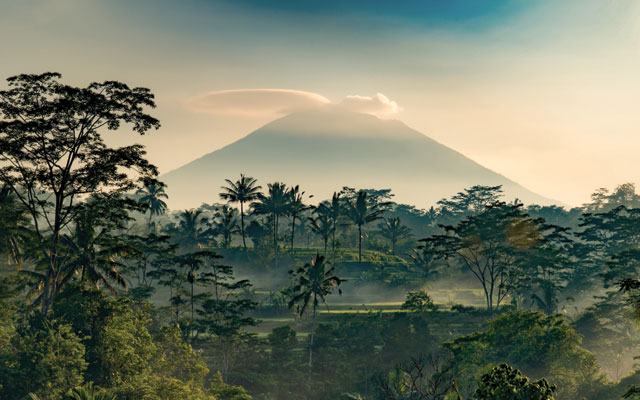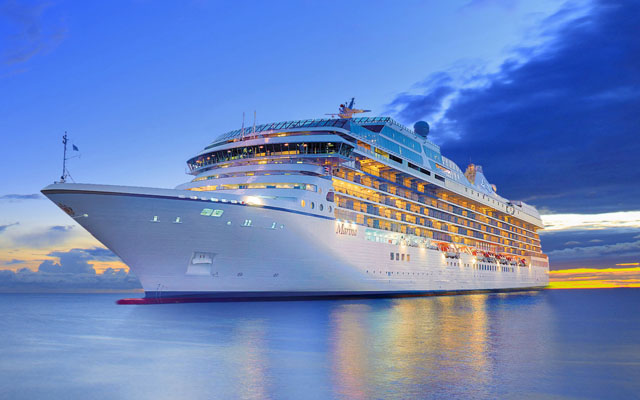Mt Agung’s eruption may have shaken travel confidence in Bali, but from this seismic event the tourism sector also discovers fertile ground for lessons on crisis management and market diversification
As Bali’s tourism moves past the aftermath of last year’s Mount Agung eruption and the bombings in Surabya last month, the travel trade has also been left to ponder the important questions of how to better manage crises and risks in a world constantly fraught with insecurity and change.

Lifting hopes for restored tourism confidence is the 2018 Annual Meetings of the International Monetary Fund and World Bank Group taking place in Bali come October. The high-profile meetings are said to be the largest event the island has hosted, with an estimated attendance of more than 15,000 delegates from 189 countries.
Lenny Willyana, director of sales and marketing, Discovery Kartika Plaza Hotel, said: “We would like to have more international events in Bali so that more travellers (would gain the) confidence to travel here and consider Bali as a (top choice for both leisure and business events).”
Travel confidence is especially important to Indonesia now, as the destination is just beginning to recover from the impact of Mount Agung’s eruption in October 2017, which led to airport closures in Bali and Lombok and travel advisories from a number of countries.
Massive cancellations to Bali ensued, and the island’s top origin market of China also took the largest hit.
“(Average) hotel occupancy in Bali was between 50-70 per cent before the eruption, but went down to 10 per cent after the eruption according to reports from some hotels,” Willyana revealed.
Based on the 1Q2018 data from the Bali Statistics Office, arrivals from China were down by 24 per cent year-on-year, Australia six per cent and Singapore four per cent. Total arrivals to Bali in that period was 1.3 million, down 2.7 per cent.
Sudarsana, corporate general manager business development and marketing communications, Santika Indonesia Hotels & Resorts, said: “By March things were back on track and we saw full recovery by May.”
But just as Bali’s tourism recovery picks up momentum after a slower 1Q, a string of terror attacks hit Surabaya last month, prompting worries that recovery efforts would be negated.
Fortunately, tour players such as I Ketut Ardana, chairman of ASITA Bali Chapter, said the immediate impact of the Surabaya attacks on bookings was insignificant.
The recent terrorism incident did not appear to weigh on concerns of outbound agents in South-east Asia, and Ardana is confident that Bali bookings for the coming
summer peak season would remain intact.
With the volcanic eruption and Surabaya incident now moving to the rear view mirror, these recent crises however offer valuable lessons for Bali’s tourism stakeholders.
Yazid Sidik, director of sales and marketing of Best Western Kamala Jimbaran, said: “China was our main international market, so the eruption affected us quite a bit. We are increasing our focus on other markets like India, while keeping the China market (strong).”
On the other hand, Eddy Sunyoto, director of Terimakasih Indonesia Tours & Travel, said: “We also learnt that the Chinese market bounces back very fast.”
Similarly, I Gde Pitana, deputy minister for tourism marketing development I, Ministry of Tourism, said: “The Chinese are obedient citizens who follow (government advice), hence the cancellations. However as soon as the advisory was reversed, the market returned quite fast too.”
Quick crisis response on the international level is also important. In the case of Bali, tourism minister Arief Yahya met with diplomatic missions in Indonesia and authorities in China.
“The result was the lifting of the travel warning and we immediately started to see traffic returning,” said Bambang Sugiono, director of Gajah Bali Tour.
On whether the government was relying too heavily on the China market, Nia Niscaya, deputy minister of tourism marketing development II, whose portfolio includes China, said: “China is the biggest outbound market in the world now. Aiming at a tiny percentage of this market means big in the actual number.”
But the Chinese are also valued travellers for other reasons, she explained, as this market makes relatively quick travel purchasing decisions and also likes exploring a destination instead of just staying in the hotel.
Still, the ministry is also continuing to focus on other growth markets such as India and the Middle East, alongside a diversification of its marketing promotion efforts on destinations beyond Bali in Indonesia, Niscaya said.
Lauding the government’s efforts in market diversification and infrastructural development across the country as part of its 10 New Bali’s initiative, Garth Simmons, AccorHotels’ COO for Indonesia, Malaysia and Singapore, thinks more could still be done.
“The Chinese is not the only market to Bali. You have the Australians, Europeans, Japanese, Singaporeans, and let’s not forget the Indonesian domestic market,” he opined.
Addressing the possibility of Mount Agung as an active volcano erupting again, the tourism minister said contingency plans are ready to be activated, including having airports in neighbouring destinations like Lombok, Surabaya and Banyuwangi ready for aircraft diversion and evacuation; plus land-and-sea evacuation mechanism via Gilimanuk ferry terminal connecting Ketapang in East Java and fast-boat service to Banyuwangi.
The Bali Tourism Hospitality Task Force was also set up as a permanent unit to tackle issues potentially affecting the stability of Bali’s tourism.




















